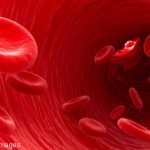BALTIMORE—2022 was an exciting year in the field of vasculitis, not least of all because the ACR and EULAR released classification criteria for several forms. This development came just one year after the release of ACR/Vasculitis Foundation (VF) guidelines on the management of a number of vasculitides. With so much new information to be absorbed, attendees welcomed the Updates on Vasculitis session at the 19th Annual Johns Hopkins Advances in the Diagnosis and Treatment of Rheumatic Diseases Symposium.

Dr. Merkel
The presentation was given by Peter Merkel, MD, MPH, chief, Division of Rheumatology, University of Pennsylvania, Philadelphia, and began with a discussion of the 2022 classification criteria. This effort represents the first update in more than 30 years and took over a decade to complete.
Prospective data were collected from about 7,000 patients at more than 100 international sites, representing the largest ever research project in vasculitis. The initiative included information on anti-neutrophil cytoplasmic antibodies (ANCA) and the use of imaging modalities, such as computed tomography angiography (CTA), magnetic resonance angiography (MRA), positron emission tomography (PET) and ultrasound, which were not part of the original 1990 ACR classification criteria.
Dr. Merkel noted these criteria are intended to be used for research purposes and not for diagnosis.
In terms of clinical practice, Dr. Merkel explained that the 2021 ACR/VF guidelines for the management of the vasculitides are very helpful in providing evidence-based recommendations.
AAV
Next, Dr. Merkel summarized standard of care in the treatment of ANCA-associated vasculitis (AAV). For non-severe AAV, meaning disease that is not organ or life threatening, the remission-induction phase—typically lasting three to six months—involves treatment with glucocorticoids and either methotrexate or rituximab. Thereafter, treatment for remission maintenance may last anywhere from as little as six months to indefinite therapy, and such treatment often involves continuation of the induction agent (i.e., methotrexate or rituximab), if it was effective.
Induction therapy for severe AAV, which involves organ- or life-threatening disease and represents the majority of new disease presentations, is more complex and includes consideration of cyclophosphamide, avacopan and plasma exchange.
Effective therapy for maintenance of remission in AAV depends on interpretation of landmark trials in this space. One such study was the MAINRITSAN-1 trial, which found that 500 mg of rituximab every six months is more effective than 2 mg/kg/day of azathioprine for remission maintenance in AAV.1 Dr. Merkel pointed out a number of questions that remain, including what the effects of a higher dose of rituximab would have been and what the results would have been if azathioprine had not been tapered from the 2 mg/kg/day dose after one year.
GPA & MPA
Another important study, the RITAZAREM trial, examined 190 patients with granulomatosis with polyangiitis (GPA) or microscopic polyangiitis (MPA) with relapse treated with intravenous rituximab at a dose of 375 mg/m2 weekly for four consecutive weeks. Patients who achieved remission at four months were randomized to treatment with either 1 g of intravenous rituximab every four months or 2 mg/kg/day of azathioprine from months 4 to 24. The study demonstrated that rituximab was superior to azathioprine for preventing disease relapse, but it is notable that the rate of relapse accelerated in both arms once either agent was stopped at 24 months.2
Glucocorticoids
On the subject of glucocorticoids in the treatment of AAV, Dr. Merkel did not mince words in stating this class of medication is key to saving patients’ lives and preventing end-stage renal disease (ESRD) in the short term. If there is concern for pulmonary hemorrhage or rapidly progressive glomerulonephritis, there should be no delay in treating with glucocorticoids. However, there is excitement in the field of vasculitis about steroid-sparing strategies for AAV.
The PEXIVAS trial study sought to answer two main questions: 1) Does plasma exchange reduce death from any cause or ESRD, and 2) is a reduced-dose oral glucocorticoid regimen non-inferior to a standard-dose regimen in terms of death from any cause or ESRD? In this randomized controlled trial, 700 patients with severe AAV treated with cyclophosphamide or rituximab and intravenous methylprednisolone were randomized to receive either adjuvant plasma exchange or no such therapy. Researchers found no difference in mortality or ESRD rates in the group of patients that received plasma exchange vs. the group that did not receive plasma exchange. In addition, reduced-dose glucocorticoids were non-inferior to the standard-dose regimen in the primary outcome, which was a composite of ESRD or death, with ESRD being defined as 12 weeks of continuous dialysis or need for kidney transplant.3
In the ADVOCATE trial, treatment with the C5a receptor inhibitor avacopan was compared with prednisone in patients with AAV who were being treated with rituximab or cyclophosphamide/azathioprine. The patient population included patients with GPA and MPA who were positive for anti-proteinase-3 (PR3) ANCA or myeloperoxidase (MPO) ANCA and had active, new-onset or relapsing vasculitis with moderate to high disease activity. Patients were then randomized in a 1:1 ratio to receive 30 mg of oral avacopan twice daily or oral prednisone on a tapering schedule. In this study, avacopan was found to reduce glucocorticoid use and toxicity by eliminating the need for extended daily glucocorticoid therapy. The medication was also found to improve disease control and recovery of renal function.4
EGPA
Just as there is excitement about these studies with respect to GPA and MPA, the use of interleukin (IL) 5 inhibitors in eosinophilic granulomatosis with polyangiitis (EGPA) sparks interest as well. Dr. Merkel stated that IL-5 inhibitors are the first class of drugs other than glucocorticoids with solid data from randomized controlled trials to show efficacy in the treatment of EGPA. These medications tend to be well tolerated, and the uptake in the U.S. has been high.
It is important to point out that data on efficacy are currently restricted to treatment of upper and lower respiratory airway disease. These treatments may be useful to treat other, more severe manifestations of disease, but additional studies are needed to prove this.
Emerging Illnesses
Dr. Merkel concluded his talk by pointing out two relatively new conditions in the field of rheumatology. The first is deficiency of adenosine deaminase 2 (DADA2), a monogenic disease with loss of function mutations in the CECR1 gene. The condition can present with early-onset strokes, and signs and symptoms that may mimic those of polyarteritis nodosa.
The other, even newer, condition is VEXAS syndrome, which stands for vacuoles, E1 enzyme, X-linked, autoinflammatory and somatic. This disease involves somatic mutations in the UBA1 gene, affects mostly men over the age of 60 and has consistent features that include elevated mean corpuscular volume (MCV) and high C-reactive protein (CRP). Given a recent study showed that as many as 1 in 14,000 patients in a healthcare system cohort harbored a UBA1 disease-causing variant and showed hematologic, autoimmune, pulmonary and dermatologic clinical manifestations seen in VEXAS syndrome, the condition may be more common than was previously known.5
In Sum
Dr. Merkel’s presentation was well received by an audience that understands all too well the significant morbidity and mortality that can occur in the setting of vasculitis. To best help our patients, we will rely on more groundbreaking research studies and evidence-based guidelines in the years ahead to serve as a North Star in our management of patients with vasculitis.
 Jason Liebowitz, MD, is an assistant professor of medicine in the Division of Rheumatology at Columbia University Vagelos College of Physicians and Surgeons, New York.
Jason Liebowitz, MD, is an assistant professor of medicine in the Division of Rheumatology at Columbia University Vagelos College of Physicians and Surgeons, New York.
References
- Guillevin L, Pagnoux C, Karras A, et al. Rituximab versus azathioprine for maintenance in ANCA-associated vasculitis. N Engl J Med. 2014 Nov 6;371(19):1771–1780.
- Smith RM, Jones RB, Specks U, et al. Rituximab versus azathioprine for maintenance of remission for patients with ANCA-associated vasculitis and relapsing disease: an international randomised controlled trial. Ann Rheum Dis. 2023 Jul;82(7):937–944.
- Walsh M, Merkel PA, Peh CA, et al. Plasma exchange and glucocorticoids in severe ANCAassociated vasculitis. N Engl J Med. 2020 Feb 13;382(7):622–631.
- Jayne DRW, Merkel PA, Schall TJ, et al. Avacopan for the treatment of ANCAassociated vasculitis. N Engl J Med. 2021 Feb 18;384(7):599–609.
- Beck DB, Bodian DL, Shah V, et al. Estimated prevalence and clinical manifestations of UBA1 variants associated with VEXAS syndrome in a clinical population. JAMA. 2023 Jan 24;329(4):318–324.


